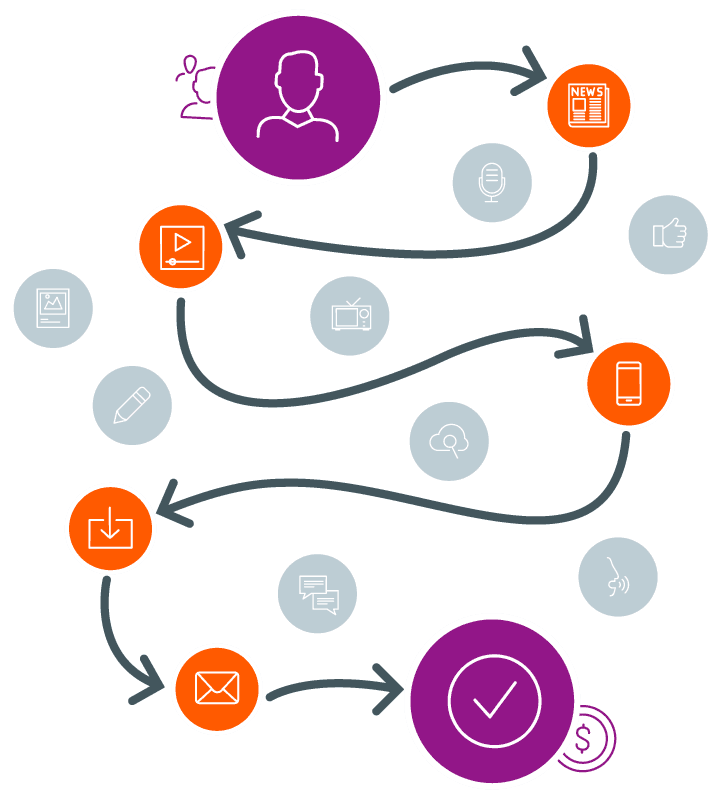So, you’ve just received a report filled with the latest statistics from your integrated marketing campaign, or perhaps you’ve just been granted access to Google Analytics bristling with data from your latest SEM push. It’s really quite incredible how much data is available these days… but what does it all mean? And more importantly, how can you use the data to increase engagement, up your conversion rate, and generate a better return on investment (ROI) on your next campaign?
Being able to read the data, understand the statistics, pick up trends, develop insights and form recommendations requires a head for numbers, specialist expertise, plus experience of the broader marketing environment. We’re not going to try to transform you into an instant guru with this one simple article, but in ten minutes or so, you should have enough foundational knowledge to make sense of some of the most common marketing data available. This will help you reveal valuable insights that really could impact your campaigns and your business.
Ready? Let’s dive in!
Marketing Qualified Lead (MQL)
A MQL is a prospect who has indicated interest in what your brand has to offer (based on measurement of interaction with marketing), or is a prospect deemed to be more likely to convert to a customer than other prospects. Leads usually become marketing qualified after they have engaged with your business like leaving their details at an event that you’re a part of, opting into your newsletter, entering into a competition you host, or downloading one of your eBooks.

Our handy insight:
It’s important to recognise that each customer is different, they have different wants, needs and values – they could come to your attention at different stages in their buying cycle. Because of this, it’s key to include touchpoints within your marketing funnel to hone in on what it means to be marketing qualified. Include metrics like email opens and click throughs, engagement on social media, interaction at an event, product demonstrations, plus other offline and online opportunities that indicate affinity for your brand, product or service.
Sales Qualified Lead (SQL)
An SQL is a prospect who has interacted with marketing material to the extent that they’re deemed ready for the next stage in the sales process, and worthy of the investment of time and resources. Sales teams need to prioritise their efforts to win sales and, by focusing on sales qualified leads, they prioritise pursuing opportunities that are closest to becoming customers. To become a SQL, prospects must usually have passed a lead scoring threshold or completed a marketing interaction that shows they’re ready to buy.

Our handy insight:
Having a strong communication channel between your sales team and marketing teams can have a dramatic impact on the quantity of SQL’s. The marketing team who are bringing in the leads should be asking the on-the-ground sales teams questions like:
- “What are the most common questions customers are asking?”
- “What products/services are customers wanting to purchase?”
- “What are the quality of leads coming in?”
- “How can we continue to support you?”
Every day, sales representatives are interacting with customers and gaining insights into what makes them tick. As good marketers, we need to ensure that we are tapping into this vital source of information to fine-tune future marketing efforts.
Marketing Return on Investment (MROI)
This is arguably the most important metric in a marketer’s repertoire. When you launch a new campaign or want to track the profitability of an existing campaign, the MROI will help you determine if the project is actually helping your business make money. It compares the amount of money you have spent on a marketing project with the amount of revenue that it’s brought in. It can be calculated by adding up all the profit from sales attributed to that marketing campaign, subtracting the sum of the costs incurred (creative costs, media costs and print costs) then dividing that by the cost sum again.
(Total revenue – Marketing investment) / Marketing investment
Let’s say you spent $150,000 to create and run your campaign over 12 months and from that you generated $300,000 profit which can be attributed to that campaign. You would have an MROI of 100%.
Our handy insight:
As an integrated marketing agency, we are advocates for multi-touch campaigns and this needs to be reflected when considering your MROI. A great way to measure your MROI is to use a multi-touch attribution model to assign weight to each of the touch points your customers interact with which leads to a purchase. One of the advantages of this model is that it provides a fuller, more complete picture of your customers’ decision and will help you draw incredible insights into which specific touch points to focus your marketing efforts on.
Cost per click (CPC)
For digital marketers, this is usually one of the first metrics you are taught and for many businesses beginning their foray into digital marketing it is one of the most crucial statistics to track for profitability. Simply put, it is the amount that you pay per click on your digital ads, including search, display and social.
Total ad spend / Total clicks
Let’s say your digital campaign spent $10,000 and they tracked 500 clicks, your CPC is $20.

Our handy insight:
Seems simple, right? But, because many digital advertising platforms place ads at auction in response to your bid strategy, the CPC can vary over the course of a campaign for an array of reasons. For example, if you’re experiencing a higher CPC during certain months of the year, fear not! Seasonality is likely to be the culprit. Some companies choose to only advertise during certain seasons so they may bid higher. High consumer traffic holidays, such as Valentine’s Day and Christmas have heightened competition among marketers, which, in turn, have raised costs.
Cost per acquisition (CPA)
CPA is a metric that measures the total cost of acquiring one customer through marketing activity.
Total campaign cost / number of customers
Our handy insight:
CPA needs to be considered in the context of the lifetime value (LTV) of a customer. You don’t want to pay more for a customer than they’re worth for your business, but that value might be compounded over time. If it costs you 1x to acquire a customer for an initial purchase of 0.5x, that may seem like a poor return. But if data indicates that most customers continue to purchase your product or service over time, the resulting LTV could be 5x, which more than justifies the initial CPA.
Let’s say you own a subscription business which charges customers $20/month and your average customer contract term is 100 months, their LTV is $2000. That means you should aim for a CPA less than $2000 in order to generate a profit for your business.
Storytelling by data
Data tells a unique story about your brand and acts as a guiding light for improvements and tweaks to your sales processes, product improvements or brand adjustments. We now live in the age of data and with 7.5 sextillion gigabytes of data generated worldwide every day. This number is crazy to even comprehend, but it’s huge. Getting a handle on the basics of how data and insights can help you improve your marketing efficacy is crucial for keeping your business on the front foot.
Best of luck with uncovering the gems in your own data mine! If you’re after an advanced data deep dive to help you uncover hidden opportunities for growth, reach out to us now and we will pair you with one of our data gurus to help your business reach its marketing summit.





Be the first to comment on "5 lessons to help you better understand your marketing data"